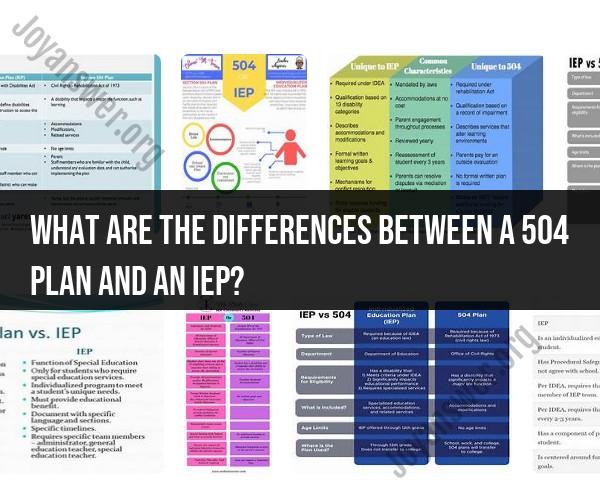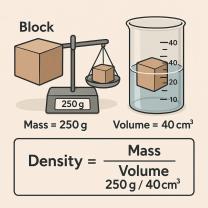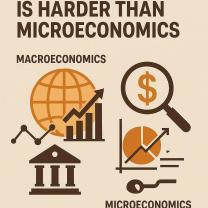What are the differences between a 504 plan and an IEP?
A 504 Plan and an Individualized Education Program (IEP) are both tools in the United States educational system designed to provide support and accommodations to students with special needs. However, they serve different purposes and have distinct characteristics. Here are the key differences between them:
504 Plan:
Eligibility Criteria: To qualify for a 504 Plan, a student must have a disability that substantially limits one or more major life activities. These disabilities can include medical conditions like diabetes, ADHD, or anxiety disorders.
Scope of Coverage: A 504 Plan covers a wide range of disabilities and can provide accommodations such as extended time on tests, preferential seating, access to assistive technology, or modification of non-academic activities. It ensures that students with disabilities have equal access to education and school programs.
Documentation: While a formal evaluation is not always required for a 504 Plan, some level of documentation is needed to establish the presence of a disability and the need for accommodations.
Legal Basis: Section 504 of the Rehabilitation Act of 1973 and the Americans with Disabilities Act (ADA) provide the legal basis for 504 Plans. These laws prohibit discrimination on the basis of disability.
IEP:
Eligibility Criteria: To qualify for an IEP, a student must have a disability that meets the criteria established by the Individuals with Disabilities Education Act (IDEA). These disabilities include specific learning disabilities, autism, intellectual disabilities, emotional disturbances, and more.
Scope of Coverage: An IEP is a comprehensive and highly individualized plan tailored to the specific needs of the student. It includes special education services, related services (e.g., speech therapy), and measurable goals and objectives. IEPs are typically reserved for students with more significant disabilities that require specialized instruction.
Documentation: An IEP is developed based on a comprehensive evaluation conducted by a team of professionals, including educators, parents, and specialists. The evaluation assesses the student's strengths, weaknesses, and educational needs.
Legal Basis: The IDEA is the federal law that governs the provision of special education services and the development of IEPs. It mandates that eligible students with disabilities receive a free and appropriate public education (FAPE).
In summary, the primary differences between a 504 Plan and an IEP are the eligibility criteria, scope of coverage, level of documentation, and legal basis. A 504 Plan provides accommodations to ensure equal access to education for students with disabilities, while an IEP offers a more comprehensive plan with specialized services and goals for students with specific learning disabilities or other significant disabilities. Both plans are designed to support the educational needs of students with disabilities, but the level of support and individualization differs.













